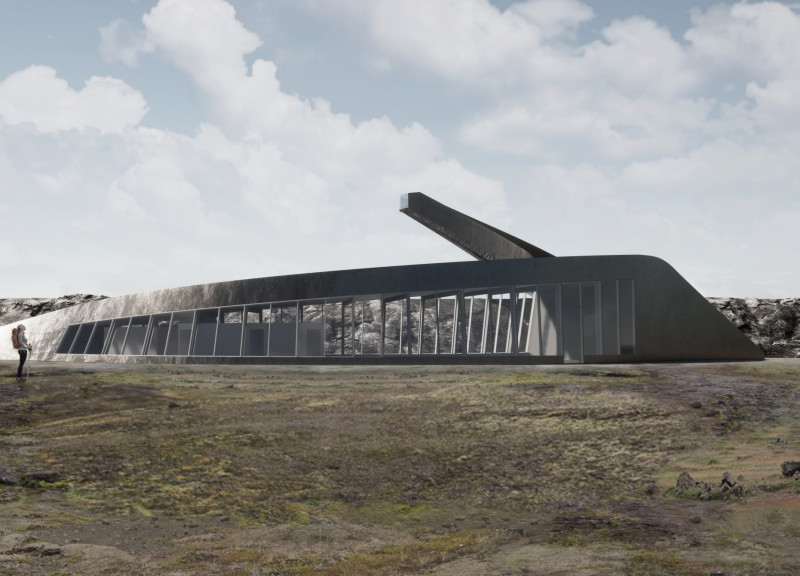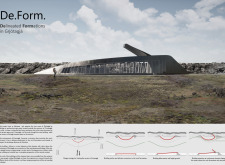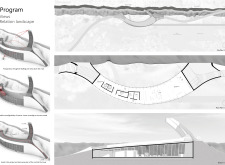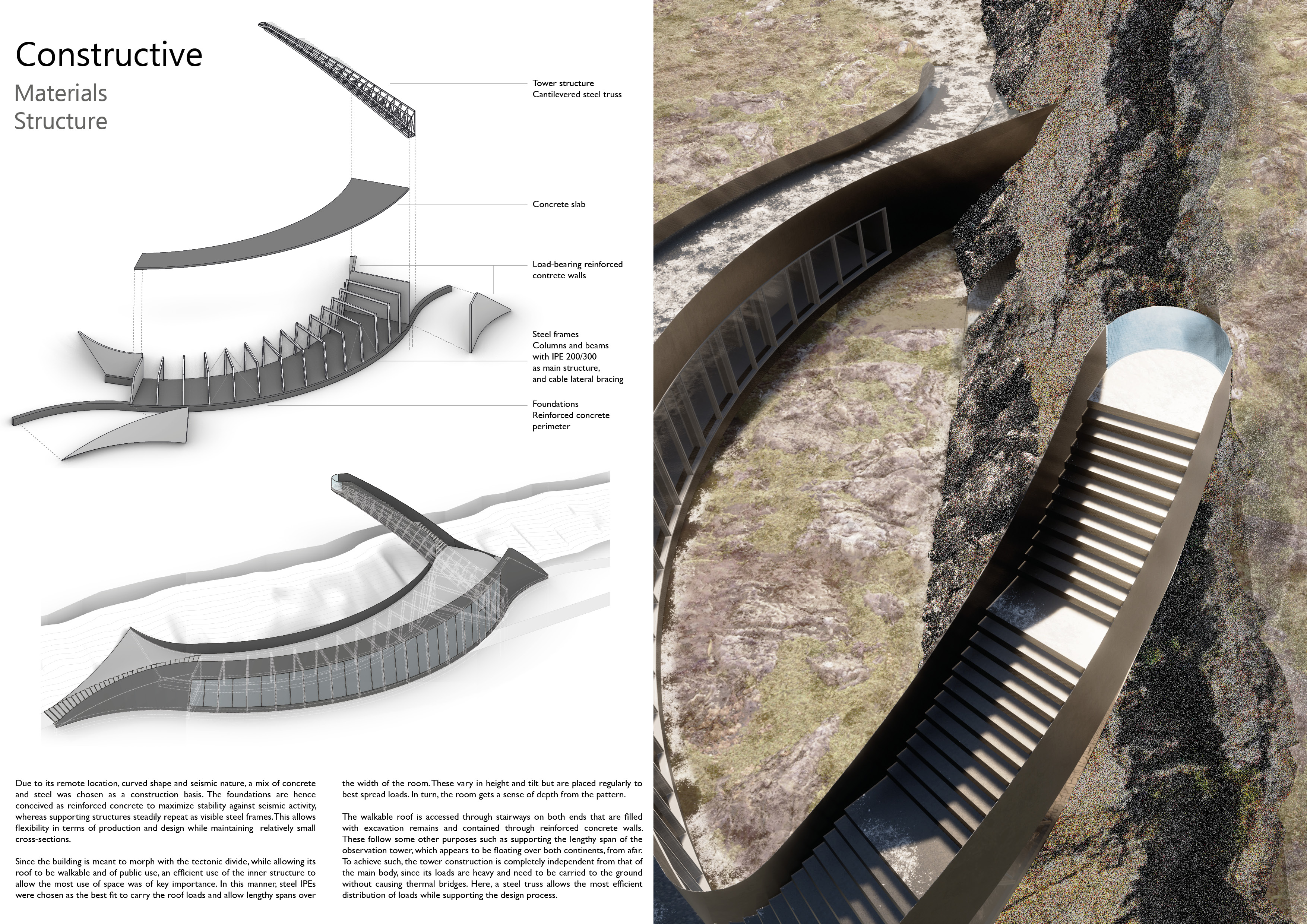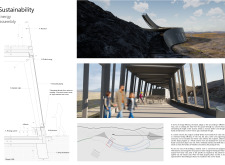5 key facts about this project
The project is located in the Grjótagjá area, known for its unique caves and geological features. It focuses on creating a private space at the entrance of Kvennagjá to control access while keeping Karlagjá open for public visits. The design aims to blend with the natural surroundings, allowing the building to fit harmoniously into the landscape.
Site Integration
The design emphasizes a surrounding enclosure that interacts gently with the rock formations of Kvennagjá. Enveloping the cave's entrance, the structure enhances privacy and enriches the visitor experience while protecting the natural environment. The building follows a curved form that rises above the rockscape, reflecting the site’s natural contours and creating a link between the architecture and its surroundings.
Accessibility and Experience
Accessibility is a key focus in the design, featuring exterior stairways that lead to elevated points within the structure. This height allows visitors to enjoy different views of the landscape, adding depth to their experience. The use of transparency is crucial, maintaining connections between indoor spaces and the outside environment, which fosters a greater appreciation of the site's geological features.
Materiality and Structural Considerations
Load-bearing reinforced concrete walls are a significant part of the design, providing stability while keeping a low visual impact on the landscape. Steel frames are chosen for their strength, supporting various architectural elements throughout the building. Columns and beams made with IPE sections create open spans, allowing for fluid interior spaces. Concrete slabs further support the roof and elevated areas, contributing to the structure’s overall integrity.
Design Philosophy
The design reflects a careful balance between enclosure and openness, encouraging exploration of the relationship between the built structure and nature. It honors the geological qualities of Grjótagjá, creating a space that provides a unique experience for visitors. The roof’s curvature serves a functional role and enhances the overall appearance, inviting guests to engage with the landscape from multiple angles, highlighting the thoughtful connection between architecture and the natural world.


